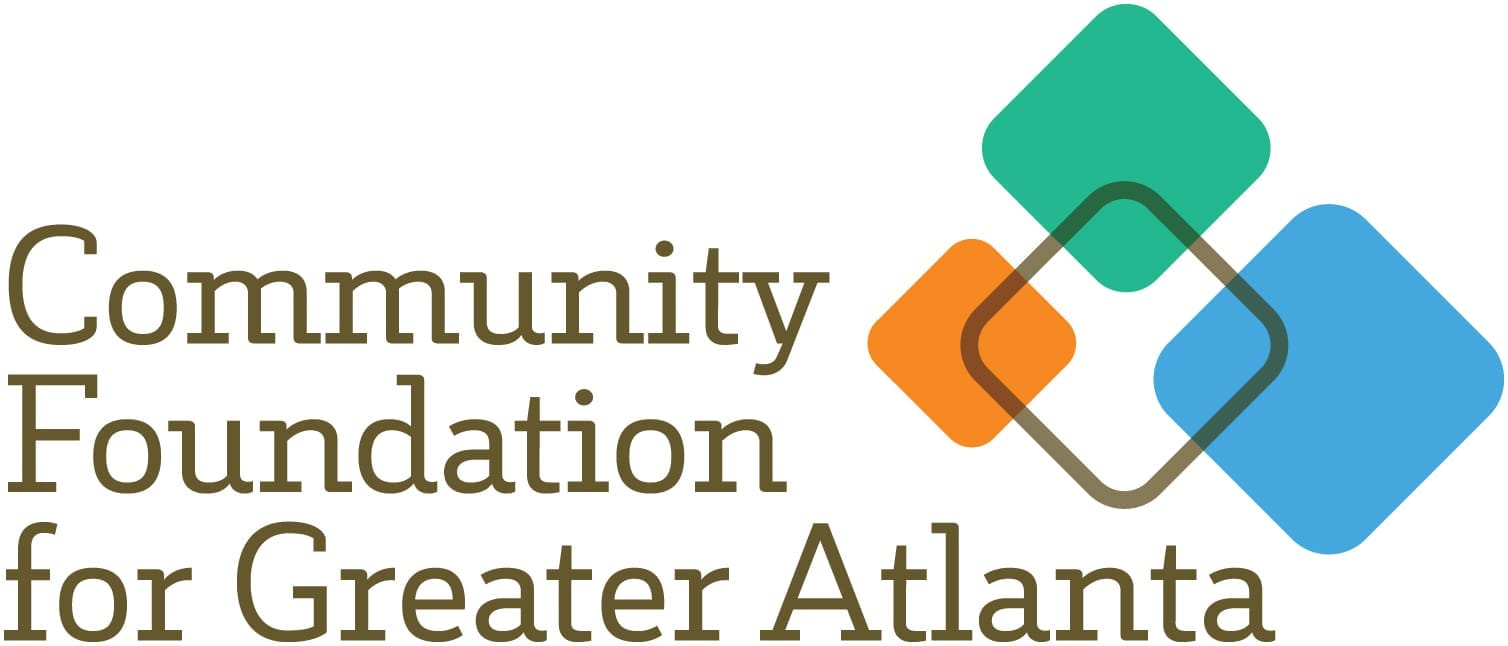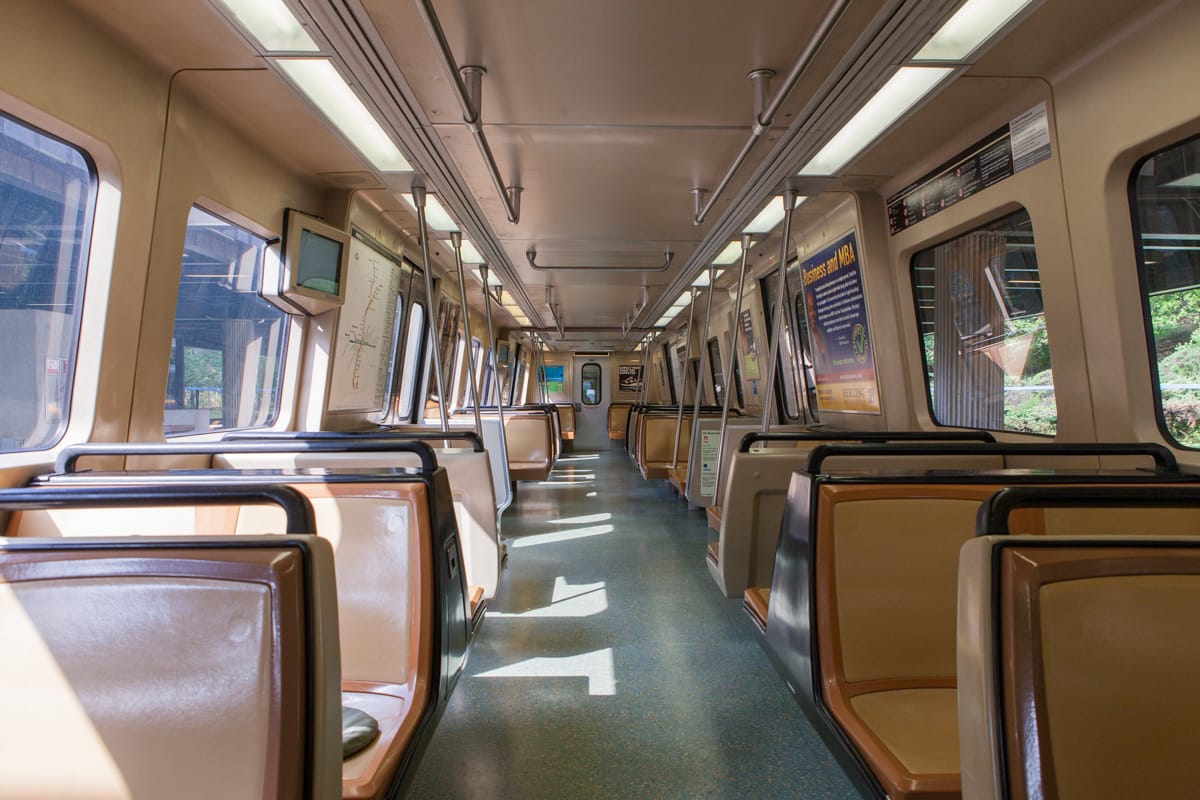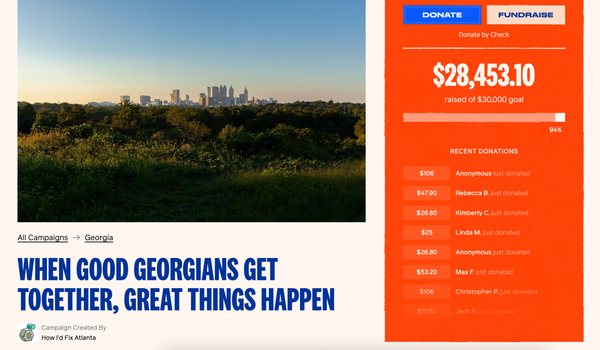How Roby Greenwald Would Fix Atlanta

How I Would Fix Atlanta — Adapt Our Growth Before It’s Too Late
Roby Greenwald
Atlanta is a growing city. This probably isn’t news to the kind of person who reads this newsletter. But let me make it a little more urgent for you. Our outdated pattern of growth has many warning signs of impending disaster. If we don’t change our status quo practices for transportation and housing, life will get worse for most of us.
Stick with me. There’s a way out.
The consequences of unplanned growth are catching up with us. We are currently the 8th largest metro-area in the U.S. with a bit over 6 million people. The Census Bureau recently published new data showing that, even though our region is still growing, it’s a little slower than before and in a slightly different way than you might expect.
We have a young-ish population, which means some of the growth is from people having babies—more than 70,000 of them per year. Subtract the 45,000 people who die, and we’re growing by about 25,000 people per year.
But historically, a bigger factor has been local job creation convincing people to move here from somewhere else. This is where we’ve recently started to see a change: there are now about 1,000 more people per year moving away from here to somewhere else in the U.S. than vice versa.
This negative domestic migration number is also true for Boston, L.A., Miami, NYC, San Francisco, Seattle, D.C. and a few others. In other words, some of the most desirable places to live in the U.S. But these cities are also well-known for high housing costs that make them unaffordable for huge swaths of the population.
It’s starting to look like metro Atlanta is joining that list. The Wall Street Journal interviewed a few families leaving Atlanta after the Census numbers came out, and the reasons they mentioned included affordability and traffic.

So, how do we fix our growth? How do we turn ATL into a place where we reap all the benefits of people wanting to live and work here, while making the city better for everyone in the process?
On the housing front, our current dilemma involves the struggle between low-density sprawl and high-density urban infill. We’ve had some great (and some not-so-great) infill projects recently, and more of both are on the way, but old habits are hard to break. Our addiction to sprawl is becoming terminal.
It doesn’t have to be, though! Infill construction could meet much of the demand for housing, with an economy of scale that demonstrably improves affordability. In fact, nearly every measurable outcome is better with increased infill, both for those of us who already live here and for the future people who want to move here.
Much of the infill that’s ongoing or already built in Atlanta has been in formerly-industrial areas. Think: Atlantic Station, the Gulch, or the Howell Mill and Northside Drive corridors. But throughout the urban core, there are still vast areas of vacant (looking at you, Hulsey Yard) or under-utilized land (that 20-acre parking lot at a big box store near you) just waiting to be filled with new neighbors.
There’s also unfortunately land in prime transit corridors that is required by law to be low-density single family housing, even if the owner is willing and able to build something different. Reforming zoning laws, streamlining permitting processes, and updating building codes to allow things like single-stair apartment buildings that have worked in other places. These are just a few of many common-sense steps we could take to improve our housing situation.

Housing and transportation are inextricably tied together. Sprawl only works if everyone drives everywhere, and driving just doesn’t scale beyond a critical threshold—one we blew past a generation ago. Infill development, on the other hand, is closer to the urban core, so it’s also closer to jobs, schools, and services. That directly translates to less driving, but it also allows people to not drive at all because short trips are possible with more efficient transportation modes such as transit, bicycling, or walking.
If we are thinking about improving future Atlanta, we have to imagine the differences between these two styles of development. If we do what we’ve always done, traffic congestion will either get worse from future growth or get better because the regional economy stagnated and a bunch of people left. Any congested roadway is, by definition, above capacity—meaning more people are trying to drive a vehicle on it than it is able to carry. If capacity stays the same, then adding more cars inevitably increases congestion. Most of the highways inside the perimeter have been above capacity for years or decades.
The good news is that there are other ways to get around, and those modes are much more scalable for increased capacity. Our highways cannot currently meet travel demand, much less in a future with a larger population. But we can easily increase alternate transportation options to meet demand. If you make it safe, pleasant, and convenient to ride an electric bicycle on a 3-mile trip, you will soon find more people riding electric bicycles on 3-mile trips.
We also have the space and resources to increase transit capacity in a way that would make our peer cities jealous. We have both heavy and light rail systems already in place, just begging to be expanded and properly utilized. The much-mocked Atlanta Streetcar has a capacity of about 200 people per vehicle, or roughly the same as a one lane traffic jam one mile long. It currently runs about every 15 minutes, but could easily do double that. It doesn’t go very far now, but that’s a choice, and we could choose differently.
A 6-car MARTA train has a capacity of almost 600 people, or roughly a 3-lane wide traffic jam one mile long. These run about every 10 minutes at rush hour, but if we allocated resources to run them more often, we could easily improve those headways. Put another way: we can increase capacity for travel to meet demand as long as we don’t require everyone to take a 4,000-pound piece of machinery with them everywhere they go.
Atlanta is not a recognized leader on transportation issues, but that underdog status gives us the opportunity to learn from others' experiences—and then surprise everyone when we do the right thing.

They say you can win someone over by convincing them that a decision is The Right Thing To Do, but that you’ll be far more persuasive by showing them that the decision is in their own best interest. Resetting our transportation and housing priorities actually does both: it’s the right thing to do (in that it results in the least harm), but it’s also in everyone’s best interest (regardless of individual preferences). After all, everybody hates traffic and expensive housing, and nobody wants more of either.
Do you like living in the suburbs and driving to most places you go? Good news! That option will still exist in the future. But if that’s the only way we're allowed to live, then your future options are a) frustratingly worse traffic because we’re adding to an over-capacity network, or b) a stagnating region people are leaving because they can’t stand the traffic. To maintain your quality of life, you'll want to accommodate demand in denser infill areas that doesn’t compete with you for finite roadspace.
Do you prefer walkable communities with easy access to jobs, goods, and services? It’s also in your interest for there to be more infill because this expands those same opportunities to more people. If infill is blocked, then all the other people who want the advantages of a walkable intown lifestyle will be competing with you on price for the chance to be one of the lucky few. When that happens, costs go up.
Either way, your quality of life will improve with more housing and scalable transportation. If nothing changes, your quality of life will be worse. It’s not rocket science. Progress is just sitting there waiting for someone to make it happen. Hopefully that someone is reading this.
Roby Greenwald is an Associate Professor in the School of Public Health at Georgia State University. He has lived in ATL most of his life. If you ask him about this subject IRL, he'll talk about it for at least three or four beers.
How I'd Fix Atlanta is an essay series by ATLiens for ATL. In each of these pieces, a thoughtful human argues for one way we could make our city better. Sometimes the ideas are serious. Other times? A little more lighthearted. From infrastructure to food trucks, public transit to wildflowers, nothing is off limits.
How I’d Fix Atlanta was created by Austin L. Ray. It's a free newsletter sent on a Thursday of most months. It's also an annual zine that costs money. Sometimes it’s a performance on a stage. Other times, it’s a fundraiser. It's always a bunch of stickers. Occasionally it's featured on a podcast or a legendary WABE show. How I’d Fix Atlanta is large, it contains multitudes.
Each writer is paid $1,000 for their essay. Thanks for reading.





